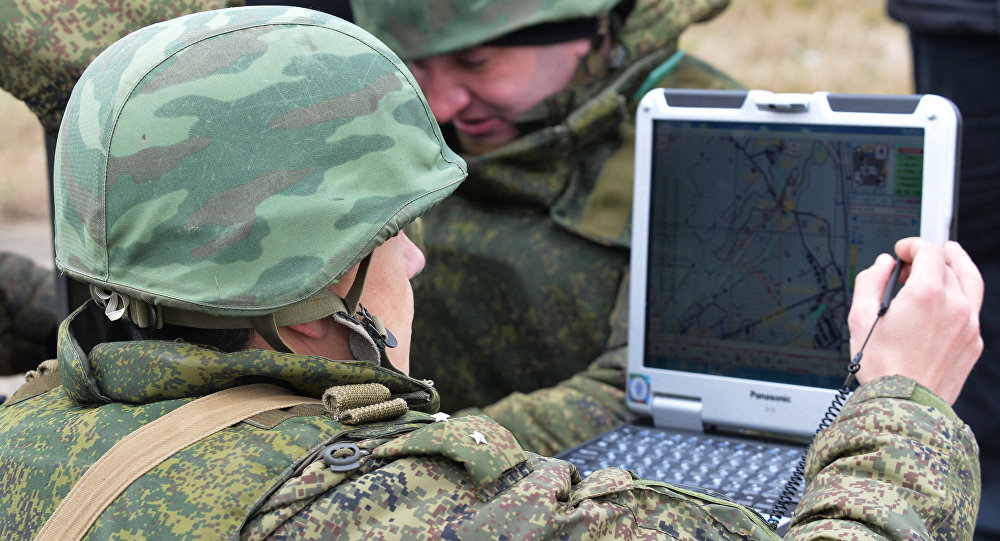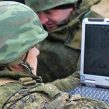
Putin Orders ‘Snap Inspection’ Exercise in Southern Military District
Publication: Eurasia Daily Monitor Volume: 13 Issue: 31
By:

On February 8, President Vladimir Putin ordered a “snap inspection” military exercise in the Southern Military District (MD) (see EDM, February 11). The pattern of snap inspection exercises in Russia is now well established, introduced in February 2013 by Defense Minister Army-General Sergei Shoigu in an effort to raise combat readiness in the Armed Forces. These exercises are used to assess units and test various aspects of the military. Massive snap exercises are also frequently used to send signals to other actors, as exemplified by their regular use following Russia’s illegal annexation of Crimea in February–March 2014. The latest snap inspection reveals some interests and priorities in assessing the Armed Forces during the current combat training year (RBK, February 11).
Last week’s snap inspection exercise in the Southern MD, the district with the highest levels of combat readiness, officially involved 8,500 personnel, 900 military vehicles, 200 fixed wing aircraft and helicopters, and 50 ships. It included elements of the Ground Forces, elite Airborne Forces (Vozdushno Desantnye Voyska—VDV), air and sea components, as well as Military Transport Aviation (Voyenno Transportnoy Aviatsii—VTA). The Central MD played a supporting role and facilitated testing strategic mobility. The Central MD set up more than 60 field posts in the district, and used automated command, control and communications (C3) to exchange data with counterparts in the Southern MD. In addition, the National Defense Management Center (Natsional’nyy Tsentr Upravleniya Oboronoy) played a coordinating role during the exercise (Kremlin.ru, Krasnaya Zvezda, February 11).
According to defense ministry sources, the main theme of the February snap inspection in the Southern MD was to rehearse the defense of the Crimean Peninsula from a “massive air attack.” Consequently, the air force and air defense played a significant part. The operational and tactical elements of the exercise in relation to Crimea’s defense involved the Black Sea Fleet and the VDV conducting coastal defense and an amphibious assault. Shoigu stated that 29 sub-exercises were conducted at various levels. A territorial defense headquarters was co-located in Rostov, Sevastopol and Simferopol. The units deployed during the exercise worked on containing crisis situations linked to terrorist attacks, in addition to responses to the seizure of government and military facilities (TASS, February 11).
However, the snap inspection in the Southern MD was staged in the context of an enduring period of tensions in Russia’s relations with the United States as well as the North Atlantic Treaty Organization (NATO), stemming from Moscow’s behavior in Ukraine and disagreement over its intervention in Syria. Indeed, given heightened tensions between Ankara and Moscow since the Turkish downing of the Russian Su-24M bomber on November 24, 2015, the snap inspection may have been calibrated to showcase Russia’s capability to respond to escalation, should the Turkish government take such risks. Moreover, the exercise coincided with Prime Minister Dmitry Medvedev warning about conflict escalation risks in Syria during the Munich Security Conference. Medvedev especially targeted his warnings toward other actors contemplating sending ground forces to the conflict in Syria: in this sense, the takeaway from the snap inspection is that Saudi Arabia and Turkey should seriously consider possible Russian responses if they choose to become more deeply involved in military action in Syria (Nezavisimoye Voyennoye Obozreniye, February 12; Nezavisimaya Gazeta, February 9).
In the combat-training dimension, the decision to order the snap inspection in the Southern MD was undoubtedly influenced by the fact that the district will host the highlight of the combat training year: Kavkaz (Caucasus) 2016. Many of the themes in the last snap inspection will be repeated during Kavkaz 2016, and this early rehearsal may aid the General Staff to refine the exercise vignettes and set further tasks for commanders to solve (Krasnaya Zvezda, January 12).
The General Staff uses these exercises to test and inspect a number of themes. In addition to overall combat-readiness levels and learning more about the shortcomings of the units involved, the exercise in the Southern MD was aimed to examine the following: service interoperability, command and control with special emphasis on automated systems, the relocation of troops from the Central MD to the Southern MD, and strategic mobility in terms of the movement of troops and hardware, but also with reference to the tempo and throughput capacity of air lines of communication (ALOC) using the VTA. No doubt, the lessons from last September’s Tsentr 2015 were factored into this, which was held at a time when Moscow was rapidly developing and using the new ALOCs to Syria. Kavkaz 2016 is likely to witness several threat-linked responses, ranging from terrorism to inter-state conflict, as well as again returning to the defense of the Crimean Peninsula. Testing some of these in advance of Kavkaz 2016, scheduled for this summer, suggests that the General Staff is attaching great importance to the exercise (Interfax, Vesti, February 11; Nezavisimoye Voyennoye Obozreniye, February 9).
Southern MD units were therefore inspected to test command and control as well as speed of deployment, with close reference to air defense capabilities. “Mobilization” and “territorial defense” were also examined during the inspection exercise, meaning that the evolving reserve manpower system was closely scrutinized. The General Staff was instructed to organize and conduct checks on the command-and-control system in the Southern MD in addition to the VDV, as well as the communication systems used in the Southern and Central MDs. The acting chief of the Navy, Admiral Vladimir Korolev, was instructed to carry out checks on the Black Sea Fleet and the Caspian Flotilla and oversee naval exercises. Ground Forces commanders were tasked with a focus on joint actions and involvement in the relocation of units between the MDs. Colonel-General Viktor Bondarev, the commander-in-chief of the Aerospace Forces (Vozdushno Kosmicheskikh Sil—VKS), oversaw the air defense planning during the snap inspection (Mil.ru, February 8).
Given the timing of the snap inspection, its composition, and the prominent role assigned to rebuffing an imaginary and highly improbable “massive air attack” on Crimea, it is certainly possible that Russia’s political-military leadership wants the exercise to convey a warning of escalation risks to foreign powers considering a more direct military role in Syria—and one that crosses Moscow’s strategic aims and interest in the country. If so, that warning includes Turkey, a country covered by NATO’s Article 5. With some Alliance members trying to persuade Ankara to cease its attacks on Kurdish targets in northern Syria, Moscow may judge that, if needed, it can make kinetic contact with Turkish forces in Syria with relative impunity.




